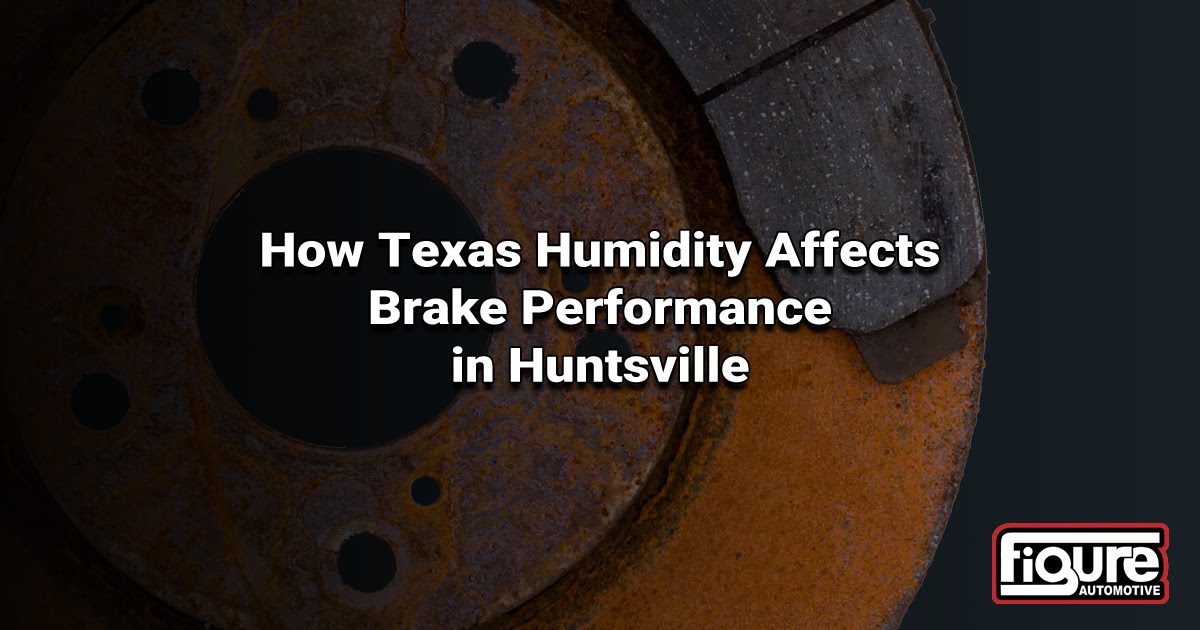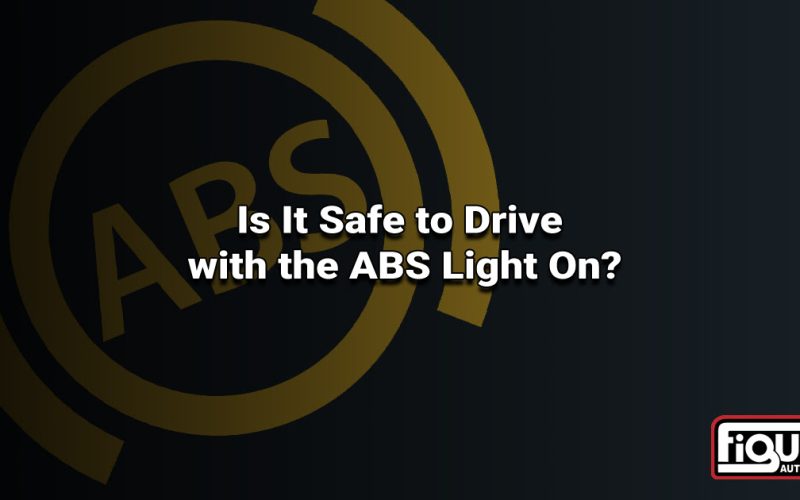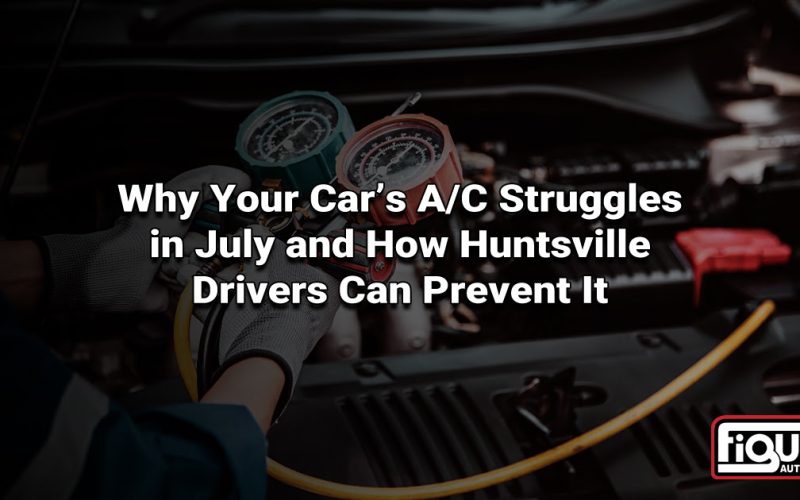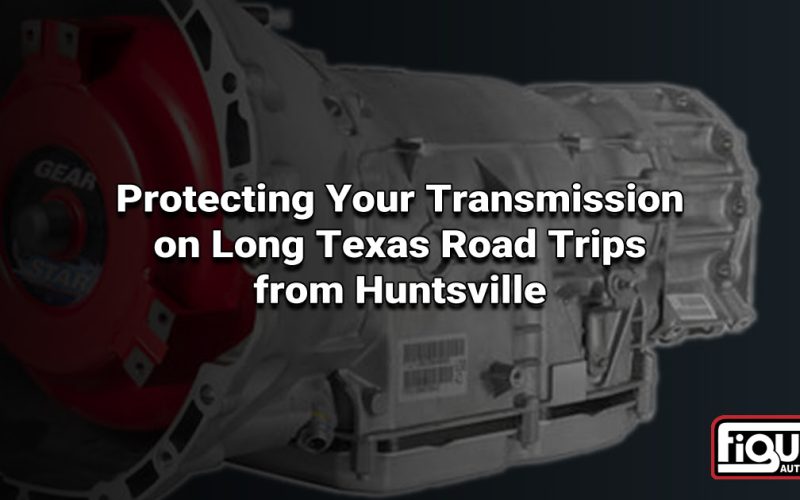Figure Automotive – Huntsville’s trusted auto repair shop
Moisture is the silent killer of stopping power. Catch it before it boils or rusts, and you’ll save pads, rotors and sometimes lives.
July in Huntsville, TX means afternoon humidity pushing 70 % while the pavement shimmers like a mirage. That sticky Gulf air creeps into every nook of your braking system, raising fluid-boiling points, rusting rotors overnight, and glazing pads just when you need them most. Below you’ll learn how humidity attacks, how to spot early warning signs, and the smartest (cost-controlled) ways to stay safe.
(Need expert eyes right now? Book a FREE brake inspection and drive in today.)
Why Humidity Is Brutal on Brakes
1. Brake fluid loves water
DOT 3 & DOT 4 fluids are hygroscopic they absorb airborne moisture through microscopic pores in rubber hoses and the reservoir cap. Every 1 % rise in water content drops the fluid’s boiling point about 50 °F. On a downhill run to Houston, caliper temps can spike to 500 °F; water boils at 212 °F, forming steam bubbles that rob hydraulic pressure (you feel a “spongy” pedal).
2. Rotor flash-rust
Mid-summer nights often hover above 80 °F with high dew-points. The iron rotor surface cools after parking, moisture condenses, and orange rust blooms in hours. First stop next morning? Pads scrape that rust like sandpaper, reducing friction and etching grooves.
3. Pad glaze & fade
Moist air plus high heat softens binding resins inside the pad. Under prolonged braking, resins melt, smear across the rotor, and create a glassy surface. Results: squeals, shudder, and a scary increase in stopping distance.
Humidity Stress Checklist July Edition
| Item | DIY Sign | Shop Test |
|---|---|---|
| Brake-fluid age | No service record in past 24 mo. | Fluid moisture % with electronic tester |
| Pedal feel | Spongy on hot days; firms when cool | Pressure-bleed and pedal travel gauge |
| Rotor surface | Orange rust ring after overnight rain | Micrometer check for thickness variation |
| Pad face | Dark, shiny glaze; squeal at low speed | Infra-red temp reading after 3 stops |
| Wheel hub | Brown dust sealing cap | Hub pull & bearing inspection |
(Print or screenshot this table for your glovebox.)
Brake Fluid: Hygroscopic Facts & Flush Intervals
DOT 3 absorbs ~2 % water in 12 months in Texas conditions; DOT 4 a bit less but still not immune. Every manufacturer specifies a boiling-point floor (e.g., DOT 3 dry > 401 °F, wet > 284 °F). Once water drops it under 320 °F, you’re one mountain descent away from vapor lock.
- Flush interval: every 24 months or 24,000 mi (sooner if you tow or haul).
- Upgrade path: Swap to high-temp DOT 4 LV for trucks or performance cars minimal price bump, huge fade resistance.
Cost tip: Figure Automotive charges a flat fee for a full fluid exchange about half the price of a single warped rotor & pad set.
Rotor & Pad Maintenance in Damp Climates
- Use your parking brake to squeeze rear pads against rotors; scraping off dew rust nightly.
- Choose coated rotors (zinc-phosphate or Geomet finish) if your driveways stay shaded/moist.
- Bed-in properly after pad replacement: 10 gentle stops 40 → 10 mph, then 3 harder 60 → 20 mph to vaporize resins evenly.
- Avoid pressure-washing wheels when rotors are hot rapid cooling warps discs.
How Parking Habits Influence Overnight Rust
Cars left facing prevailing southeast winds catch more dew. When possible, nose your vehicle west or garage it. Rural Huntsville roads rich in limestone dust invite hygroscopic particles onto rotors, accelerating corrosion. A quick hose rinse before parking cuts rust rings by ~40 %.
FAQ
Does humidity make brakes squeal?
Yes. Moisture forms a thin rust film that pads scrape off, producing high-frequency vibration squeal. A single aggressive stop usually clears it, but chronic rust can pit rotors and keep the noise permanent.
How often should I bleed brakes in Texas?
Every two years at minimum, or immediately after any ABS activation on gravel roads (air can migrate into the modulator). High-performance track cars? Bleed before each event.
Can humidity warp rotors?
Indirectly. Rust scale forms high spots; pads heat those spots unevenly, creating “hot spots” that expand metal and lead to thickness variation the pedal-pulsation you feel. Regular resurfacing or coated rotors prevent it.
Huntsville Humidity vs. Stopping Distance
- Average July relative humidity: 69 % (Texas A&M AgriLife data)
- Moisture increase in DOT 3 fluid: +1 % water per year in open systems → 50 °F lower boiling point
- Brake fade tests: Our shop’s 2019 F-150 saw initial 60→0 mph stop at 129 ft; after three back-to-back hot stops in 90 % humidity, distance jumped to 157 ft ± 3 ft.
Source: NHTSA Summer Brake Safety Advisory – 2024 update
Book a FREE Brake Inspection
Feel a soft pedal? Hear a morning squeal? Schedule a FREE brake inspection at Figure Automotive in Huntsville. We’ll test moisture content, mic your rotors, and quote transparent pricing no surprises, just quality, cost-smart service you can trust.
References & Compliance Note
- SAE J1703 Brake Fluid Hygroscopic Study, 2024 revision
- NHTSA Office of Vehicle Safety, “Brake Fade in High-Humidity Environments” white paper
- Texas A&M AgriLife Research, “Brazos Valley Climate Data Report,” 2023
Figure Automotive – keeping Huntsville families safe, one stop at a time.




